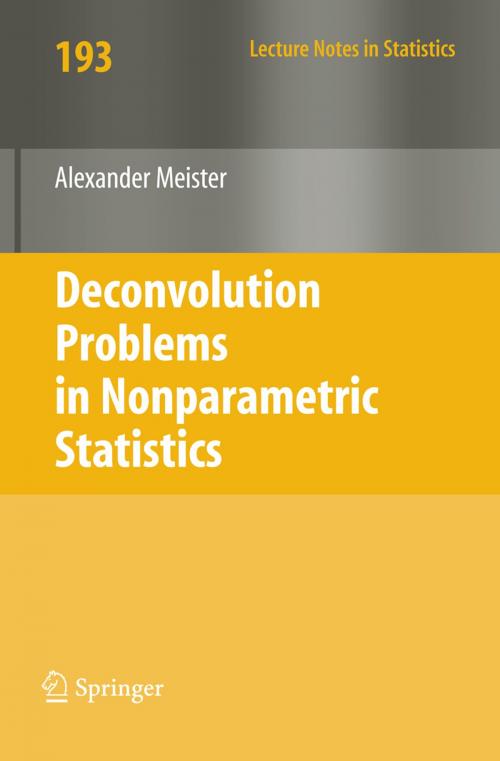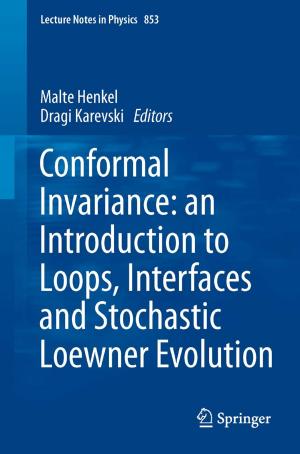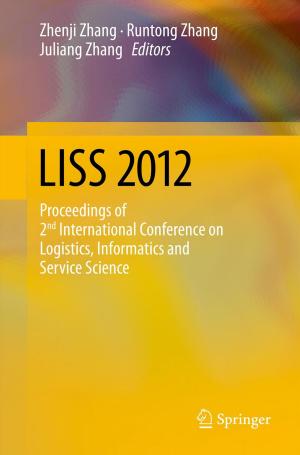Deconvolution Problems in Nonparametric Statistics
Nonfiction, Science & Nature, Mathematics, Statistics| Author: | Alexander Meister | ISBN: | 9783540875574 |
| Publisher: | Springer Berlin Heidelberg | Publication: | December 24, 2009 |
| Imprint: | Springer | Language: | English |
| Author: | Alexander Meister |
| ISBN: | 9783540875574 |
| Publisher: | Springer Berlin Heidelberg |
| Publication: | December 24, 2009 |
| Imprint: | Springer |
| Language: | English |
Deconvolution problems occur in many ?elds of nonparametric statistics, for example, density estimation based on contaminated data, nonparametric - gression with errors-in-variables, image and signal deblurring. During the last two decades, those topics have received more and more attention. As appli- tions of deconvolution procedures concern many real-life problems in eco- metrics, biometrics, medical statistics, image reconstruction, one can realize an increasing number of applied statisticians who are interested in nonpa- metric deconvolution methods; on the other hand, some deep results from Fourier analysis, functional analysis, and probability theory are required to understand the construction of deconvolution techniques and their properties so that deconvolution is also particularly challenging for mathematicians. Thegeneraldeconvolutionprobleminstatisticscanbedescribedasfollows: Our goal is estimating a function f while any empirical access is restricted to some quantity h = f?G = f(x?y)dG(y), (1. 1) that is, the convolution of f and some probability distribution G. Therefore, f can be estimated from some observations only indirectly. The strategy is ˆ estimating h ?rst; this means producing an empirical version h of h and, then, ˆ applying a deconvolution procedure to h to estimate f. In the mathematical context, we have to invert the convolution operator with G where some reg- ˆ ularization is required to guarantee that h is contained in the invertibility ˆ domain of the convolution operator. The estimator h has to be chosen with respect to the speci?c statistical experiment.
Deconvolution problems occur in many ?elds of nonparametric statistics, for example, density estimation based on contaminated data, nonparametric - gression with errors-in-variables, image and signal deblurring. During the last two decades, those topics have received more and more attention. As appli- tions of deconvolution procedures concern many real-life problems in eco- metrics, biometrics, medical statistics, image reconstruction, one can realize an increasing number of applied statisticians who are interested in nonpa- metric deconvolution methods; on the other hand, some deep results from Fourier analysis, functional analysis, and probability theory are required to understand the construction of deconvolution techniques and their properties so that deconvolution is also particularly challenging for mathematicians. Thegeneraldeconvolutionprobleminstatisticscanbedescribedasfollows: Our goal is estimating a function f while any empirical access is restricted to some quantity h = f?G = f(x?y)dG(y), (1. 1) that is, the convolution of f and some probability distribution G. Therefore, f can be estimated from some observations only indirectly. The strategy is ˆ estimating h ?rst; this means producing an empirical version h of h and, then, ˆ applying a deconvolution procedure to h to estimate f. In the mathematical context, we have to invert the convolution operator with G where some reg- ˆ ularization is required to guarantee that h is contained in the invertibility ˆ domain of the convolution operator. The estimator h has to be chosen with respect to the speci?c statistical experiment.















